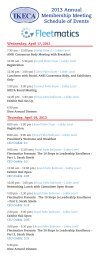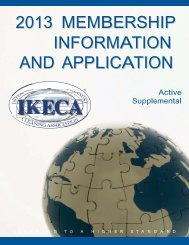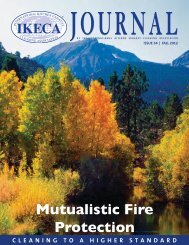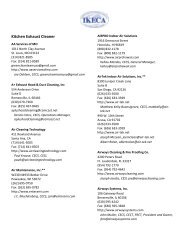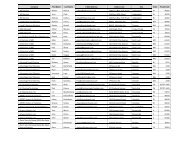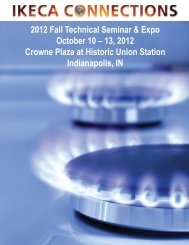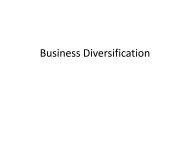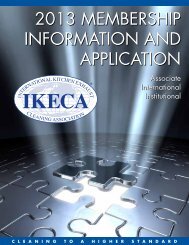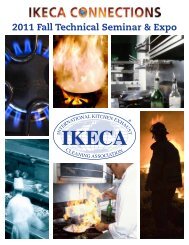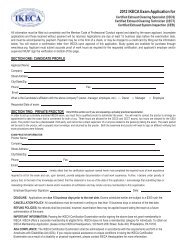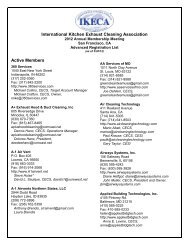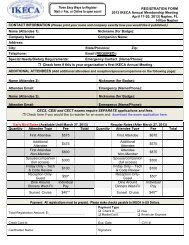TITLE Mutualistic Fire Protection - IKECA
TITLE Mutualistic Fire Protection - IKECA
TITLE Mutualistic Fire Protection - IKECA
Create successful ePaper yourself
Turn your PDF publications into a flip-book with our unique Google optimized e-Paper software.
Continued from previous pageOliver C. MooreDeputy State <strong>Fire</strong> Marshal, <strong>Fire</strong> PreventionSpecialistUtah State <strong>Fire</strong> Marshal’s OfficeOliver C. Moore retired as a Battalion Chiefwith an illustrious and honorable thirtysixyear career in the fire service. ChiefMoore has served as both volunteer andfull paid firefighter, emergency medicaltechnician, engineer/driver, station captain,and fire ground & field commander,hazardous materials technician, fire operationstraining officer, medical trainingofficer, administrative officer, public informationofficer, fire cause and arson investigator,public fire educator and juvenilefire-setter intervention evaluator. ChiefMoore was assigned as <strong>Fire</strong> Marshal andlead fire cause investigator for West ValleyCity, the second largest city in Utah up tothe time of his retirement. As <strong>Fire</strong> Marshalhe also served in the Homeland SecurityDivision Volunteer Management and Responsearena. He is an authority in a varietyof community preparedness initiativesincluding, fire safety, public education andmarketing, citizen corp./fire corp. councils,CERT program coordinator, and communitypreparedness planner.Chief Moore currently serves the UtahState <strong>Fire</strong> Marshal in the role of <strong>Fire</strong> PreventionSpecialist with a focus on, life andfire safety inspections of state buildingsand schools, commerce and trade licensingcoordinator with an emphasis on fireprotection concern licensing and techniciancertifications, to include the fire extinguisherservice, automatic fire suppressionsystems service and kitchen exhaustsystems inspection and cleaning serviceindustries. He has developed training curriculumsfor fire protection initiatives andon-line testing for these subjects. His developmentand oversight of the new “ReducedCigarette Ignition Propensity and<strong>Fire</strong>fighter <strong>Protection</strong>” program for theState <strong>Fire</strong> Marshal is remarkable.Please feel free to contact him at:omoore@utah.gov or 801-284-6349THE <strong>IKECA</strong> JOURNALFALL 2012 | PAGE 13
<strong>IKECA</strong>: Setting the StandardBy Jack Grace, CECS/CESIThe International Kitchen Exhaust CleaningAssociation, a nonprofit business associationcommitted to fire preventionand life safety by promoting kitchenexhaust cleaning to a higher standard,has taken a historic step in fulfilling ourmission by producing the first ANSI standardfor the cleaning of kitchen exhaustsystems: ANSI/<strong>IKECA</strong> C10: Standard forCleaning of Commercial Exhaust Systems.The ANSI/<strong>IKECA</strong> C10 standard was acceptedby ANSI—the American NationalStandards Institute—through the hardwork and dedication of a group of industryprofessionals. Now, <strong>IKECA</strong> has indeedset the standard for the kitchen exhaustcleaning industry. The ANSI/<strong>IKECA</strong> C10standard is established to determinethe frequency of and necessity for commercialkitchen exhaust system cleaningthrough inspection procedures, todefine acceptable methods for cleaningexhaust systems and components, andto set standards for acceptable postcleaningcleanliness. This standard hasthe stated purpose of enhancing publicsafety by reducing the potential firesafetyhazards associated with commercialkitchen exhaust systems throughthe performance of professional cleaningservices. Our <strong>IKECA</strong> certified personneland <strong>IKECA</strong> member companies cannow all benefit from this establishedANSI standard and confidently followthis blueprint for best practices in theexhaust cleaning industry.PAGE 14 | FALL 2012ANSI/<strong>IKECA</strong> C10 is a complete standardwherein we see, for the first time, a standardizedpre-cleaning inspection processincluding the inspection of the mechanicalcomponents of the exhaust system.This standard calls for the inspection ofdeficiencies and details the necessity tocommunicate that information to theowner of the system in a timely manner.This pre-cleaning inspection and reportingprocess has the potential to improvelife safety dramatically by establishing aguideline for what exactly needs to beinspected and reported back to the facilityowner, thus ensuring systems thatmay have been found to have deficienciesare being systematically reported totheir owners.The standard continues to improve safetyby directly addressing energy-source protectionas well as personnel protection.Referencing OSHA, these critical areas ofprotection are established and presentedin a straightforward manner. Every exhaustsystem cleaner will benefit fromthe outlined protections listed in thisdocument. Keeping our employees, clients,and everyone affected by the workperformed by a professional exhaust systemcleaning company safer is a key componentto the success of this documentand a lasting tribute to its creators.<strong>Protection</strong> of the work space as well asbyproduct control are also standardizedthrough ANSI/<strong>IKECA</strong> C10. These are areaswhere the <strong>IKECA</strong> has indeed shownleadership and met our commitment tocleaning to a higher standard. By properlypreparing the kitchen work space,the likelihood of contamination is sufficientlydecreased, thereby creating ahealthier environment. Additionally, byaddressing the real and difficult issue ofbyproduct removal, ANSI/<strong>IKECA</strong> C10 setsclear standards for acceptable methodsof dealing with byproducts and leavesno doubt as to the proper disposal methods.Covering both solid waste and liquidbyproduct disposal procedures, ANSI/<strong>IKECA</strong> C10 clearly provides the answer tothis previously ambiguous conundrum.At the very heart of the standard is thecleaning process and controls section.This section, cross-referencing NFPA 96standards of definition for cleaning, incorporatesthe use of the depth-gaugecomb as a trigger for the need to clean.This standard removes much of the ambiguityof time-based cleaning or subjectivemeasurements, such as “heavilycontaminated.” It is measurable,and therefore, it becomes a clear illustrationfor the need to clean as well asthe definition of how clean is clean. Thevarious methods used independentlyor in conjunction with others are covered—includinghand scraping, pressurewashing, steam cleaning, and chemicalapplication—and the decision of whichof these methods is appropriate to useis placed on the qualified individual responsiblefor the cleaning. The standardcontinues to add definition by specificallyaddressing vertical and horizontalduct cleaning, setting forth a cleardefinition of what instructions must befollowed when properly cleaning thesecomponents of an exhaust system. Inaddition to the exhaust ducts, accesspanels for cleaning the ducts are specificallyaddressed, and a standard has beenestablished for the labeling of thesepanels during the cleaning process.The standard closes with a section regardingthe labeling of systems as beingproperly cleaned as well as the properreporting for system cleaning. This partof the standard represents the first timein which the recognized best practice ofproducing photographs of completedwork is now incorporated into a standard.By providing a clear definition thatphotographs are a part of proper documentationfor system compliance, the<strong>IKECA</strong> truly is living up to our mission ofcleaning to a higher standard.I urge you to please educate as many entitiesand individuals as possible aboutthis historic document. This documentis truly a testament to the industry leadershipthat the <strong>IKECA</strong> and our membershave demonstrated by giving our timeand experience in the challenging andcomplicated process of producing thisANSI standard. As an ANSI standardwritingbody, the <strong>IKECA</strong> shall continuein our quest to produce such standardsand to constantly strive to improve andbuild upon them. These are to becomeliving documents that will indeed needto be revised, revisited, and worked onin perpetuity. Whether you are an exhaustsystem cleaner, an authority havingjurisdiction over exhaust cleaning,a manufacturer of exhaust cleaningequipment, or the end user of an exhaustsystem, this standard and thosethat shall be produced through the effortsof the International Kitchen Ex-Continued on next pageTHE <strong>IKECA</strong> JOURNAL



